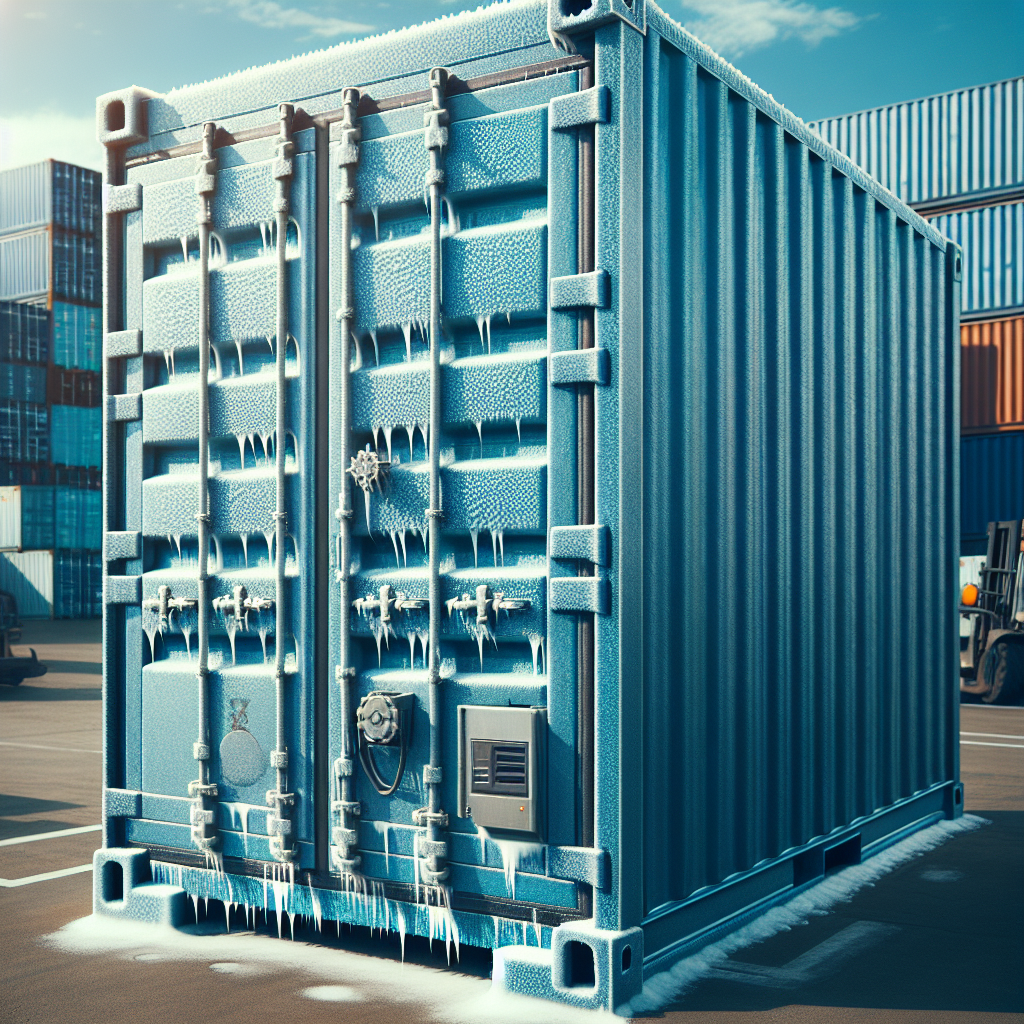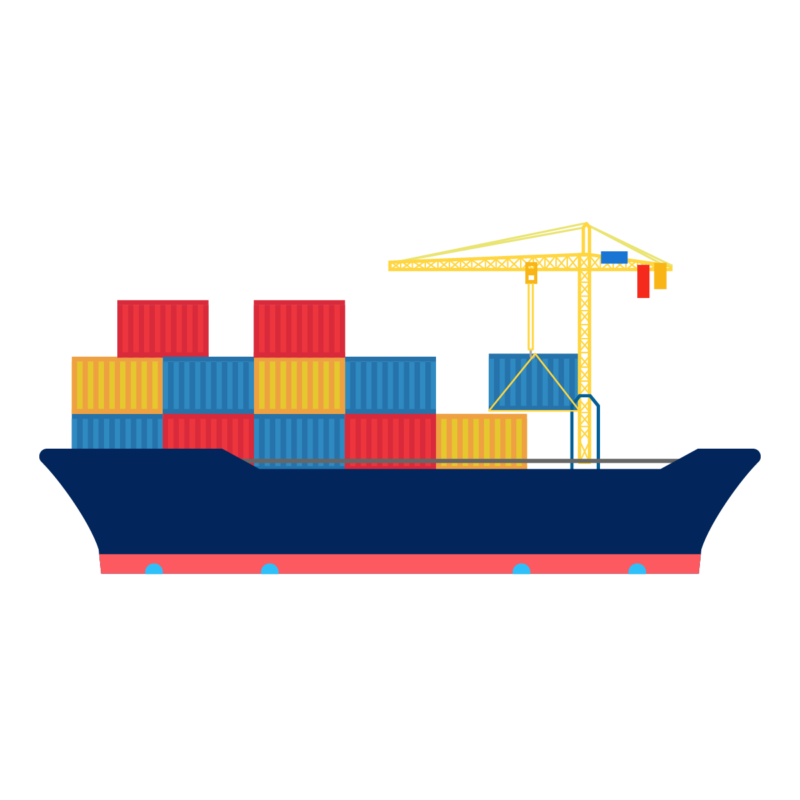Uncategorized
refrigerated container
The Benefits of Using Refrigerated Containers for Shipping Perishable Goods
Refrigerated containers, also known as reefer containers, have revolutionized the shipping industry by providing a reliable and efficient way to transport perishable goods. These containers are equipped with a built-in refrigeration system that allows for temperature-controlled storage, making them ideal for shipping a wide range of perishable items such as fruits, vegetables, dairy products, and pharmaceuticals. In this article, we will explore the benefits of using refrigerated containers for shipping perishable goods.
One of the main advantages of using refrigerated containers is the ability to maintain a consistent temperature throughout the shipping process. This is crucial for perishable goods as they are highly sensitive to temperature changes. With traditional shipping methods, such as using regular containers or air freight, there is a risk of temperature fluctuations during transit, which can lead to spoilage and loss of product. However, with refrigerated containers, the temperature can be set and monitored throughout the journey, ensuring that the goods arrive at their destination in optimal condition.
Moreover, refrigerated containers offer a wide range of temperature settings, allowing for the transportation of different types of perishable goods. For example, some goods may require a specific temperature range, such as -18°C for frozen foods, while others may need to be kept at a slightly higher temperature, such as 2-4°C for fresh produce. Refrigerated containers can accommodate these varying temperature requirements, making them a versatile option for shipping different types of perishable goods.
Another benefit of refrigerated containers is the ability to control the humidity levels inside the container. Some perishable goods, such as fruits and vegetables, require a specific level of humidity to prevent them from drying out or becoming too moist. Refrigerated containers have a humidity control feature that allows for adjusting humidity levels, ensuring that the goods are kept in the optimal environment for their preservation.
In addition to temperature and humidity control, refrigerated containers also offer excellent ventilation. This is essential for perishable goods that release gases, such as fruits and vegetables, as it prevents the build-up of ethylene gas, accelerating the ripening process and leading to spoilage. The ventilation system in refrigerated containers allows for the circulation of fresh air, maintaining the quality and freshness of the goods.
Furthermore, refrigerated containers are designed to withstand harsh weather conditions, making them a reliable option for long-distance shipping. These containers are built with durable materials and are equipped with insulation to protect the goods from extreme temperatures. They are also equipped with advanced technology, such as temperature sensors and alarms, to ensure that any temperature changes are detected and addressed promptly.
Using refrigerated containers for shipping perishable goods also offers cost-saving benefits. With traditional shipping methods, such as air freight, the cost of transportation can be significantly higher due to the need for specialized handling and faster delivery times. Refrigerated containers, on the other hand, can be transported via sea freight, which is a more cost-effective option. Additionally, the ability to ship larger quantities of goods in one container can also result in cost savings.
In conclusion, refrigerated containers have become an essential tool for the shipping of perishable goods. Their ability to maintain a consistent temperature, control humidity levels, provide ventilation, withstand harsh weather conditions, and offer cost-saving benefits make them a preferred choice for businesses that deal with perishable goods. With the advancements in technology, these containers continue to improve, providing an efficient and reliable solution for the transportation of perishable goods across the globe.
How to Properly Maintain and Monitor Temperature in Refrigerated Containers

Refrigerated containers, also known as reefers, are essential for transporting temperature-sensitive goods such as food, pharmaceuticals, and chemicals. These containers are designed to maintain a specific temperature range to ensure the quality and safety of the goods being transported. However, proper maintenance and monitoring of the temperature in these containers is crucial to prevent spoilage and ensure the integrity of the goods. In this article, we will discuss the steps to properly maintain and monitor temperature in refrigerated containers.
The first step in maintaining the temperature of a refrigerated container is to ensure that it is in good working condition. Regular inspections and maintenance checks should be conducted to identify any potential issues that may affect the temperature control. This includes checking the insulation, refrigeration unit, and temperature sensors. Any damaged or malfunctioning parts should be repaired or replaced immediately to prevent temperature fluctuations.
Once the container is in good working condition, it is important to properly load and arrange the goods inside. The goods should be evenly distributed and not overcrowd the container. This allows for proper air circulation and prevents hot spots, which can lead to temperature variations. It is also important to pre-cool the goods before loading them into the container. This helps to maintain the desired temperature and reduces the workload on the refrigeration unit.
After loading the goods, it is crucial to set the temperature correctly. The temperature should be set according to the specific requirements of the goods being transported. It is recommended to use a digital thermometer to monitor the temperature inside the container. This allows for accurate and real-time temperature readings. The thermometer should be placed in the centre of the container, away from the walls and doors, to get an accurate reading.
In addition to setting the temperature, it is important to monitor it throughout the journey. This can be done manually by checking the thermometer regularly or by using a remote temperature monitoring system. This system allows for continuous monitoring of the temperature and sends alerts if there are any fluctuations. It is also important to keep a record of the temperature readings throughout the journey for future reference.
Another important aspect of maintaining the temperature in refrigerated containers is proper ventilation. The container should have adequate ventilation to allow for the exchange of air and prevent the buildup of moisture. This is especially important when transporting goods that release gases, such as fruits and vegetables. The ventilation should be adjusted according to the outside temperature to prevent condensation inside the container.
In the event of a power outage or mechanical failure, it is important to have a backup plan in place. This can include having a backup generator or a contingency plan for transferring the goods to another refrigerated container. It is also important to have a trained and experienced team to handle any emergencies and troubleshoot any issues that may arise.
In conclusion, proper maintenance and monitoring of temperature in refrigerated containers are crucial for the safe and successful transportation of temperature-sensitive goods. Regular inspections, proper loading and arranging of goods, setting the correct temperature, continuous monitoring, and proper ventilation are all essential steps in ensuring the integrity of the goods. By following these steps, you can ensure that your goods reach their destination in optimal condition.
The Growing Demand for Refrigerated Containers in the Pharmaceutical Industry
The pharmaceutical industry has seen a significant increase in the use of refrigerated containers in recent years. These specialized containers, also known as reefer containers, are designed to maintain a specific temperature range to preserve the integrity of temperature-sensitive products during transportation. With the rise in demand for pharmaceutical products, the need for reliable and efficient cold chain logistics has become crucial. In this article, we will explore the growing demand for refrigerated containers in the pharmaceutical industry and the benefits they offer.
One of the main reasons for the increasing use of refrigerated containers in the pharmaceutical industry is the rise in demand for biologic drugs. These drugs, which are derived from living organisms, are highly sensitive to temperature changes and require strict temperature control during transportation. Any deviation from the recommended temperature range can lead to a loss of potency and effectiveness of the drug. This is where refrigerated containers play a crucial role in maintaining the required temperature throughout the journey.
Moreover, the globalization of the pharmaceutical industry has also contributed to the growing demand for refrigerated containers. With the expansion of markets and the need to transport pharmaceutical products to different parts of the world, the use of refrigerated containers has become essential. These containers provide a reliable and cost-effective solution for transporting temperature-sensitive products across long distances. They also offer protection against external factors such as extreme weather conditions, which can affect the quality of pharmaceutical products.
Another factor driving the demand for refrigerated containers in the pharmaceutical industry is the increasing regulations and guidelines for the transportation of temperature-sensitive products. Regulatory bodies such as the World Health Organization (WHO) and the Food and Drug Administration (FDA) have set strict guidelines for the transportation of pharmaceutical products to ensure their safety and efficacy. These guidelines require pharmaceutical companies to use temperature-controlled containers and monitor the temperature throughout the journey. Failure to comply with these regulations can result in costly consequences, including product recalls and damage to the company’s reputation.
Refrigerated containers offer several benefits to the pharmaceutical industry, making them the preferred choice for transporting temperature-sensitive products. One of the main advantages is their ability to maintain a consistent temperature range, regardless of external conditions. These containers are equipped with advanced temperature control systems that can maintain a specific temperature range, even in extreme weather conditions. This ensures that the pharmaceutical products reach their destination in optimal condition, without any compromise in quality.
Moreover, refrigerated containers also offer real-time temperature monitoring, providing pharmaceutical companies with valuable data on the condition of their products during transportation. This data can be used to identify any temperature deviations and take corrective measures to prevent any damage to the products. It also provides a level of transparency and accountability, as the temperature data can be shared with regulatory bodies and customers to ensure compliance with guidelines and build trust.
In conclusion, the growing demand for refrigerated containers in the pharmaceutical industry is a result of various factors, including the rise in demand for biologic drugs, globalization, and increasing regulations. These containers offer a reliable and cost-effective solution for transporting temperature-sensitive products, ensuring their safety and efficacy. With the pharmaceutical industry expected to continue growing, the demand for refrigerated containers is only going to increase, making them an essential component of the cold chain logistics for pharmaceutical companies.

